Top News
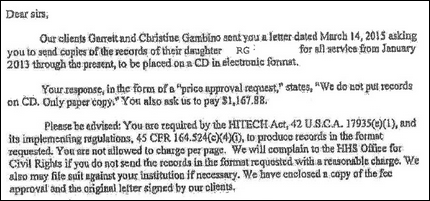
Three patients sue DC-area MedStar Georgetown University Hospital and George Washington University Hospital after being charged hundreds to thousands of dollars to obtain electronic copies of their medical records. MedStar Georgetown’s release of information contractor HealthPort charged two patients $1,168 and $1,558 respectively, itemized as per-page copying fees, a basic fee, and shipping.
The lawsuit claims that HealthPort refused to provide the records electronically except via its portal, which also requires paying per-page fees as well as a membership fee for storing the information. The second patient’s bill grew to $2,500 after paying a variety of per-page and handling fees. The patients are seeking class action status for their lawsuits, claiming that DC law requires offering records in an electronic format without fees other than for any labor involved in copying.
Reader Comments

From Tittering CIO: “Re: grammar. I saw this image and thought of you.” I call myself a Grammar Nazi. but I’m probably not since I wouldn’t correct someone directly in conversation or email – there’s no excuse for that kind of pedantic rudeness. However, I like calling out widespread misuse, perhaps subconsciously hoping someone else will do the dirty work of operationalizing my broad statements (and risk getting their own nose punched).
From Liszt Composer: “Re: blog list. You made a best blog list. You would make more of those lists if you didn’t write HIStalk anonymously – think about it.” I honestly don’t follow those lists of recommended blogs or most Twitter influence. It’s nice to know someone recognized HIStalk (most likely to publicize their own site, which is the usually the point) but winning or not winning changes nothing about what I do. I actually like being left out of most of those lists since it motivates me to be more caustic and irreverent as an underdog. Staying anonymous means that as a nobody, I can’t get too full of myself, can’t show up at every major conference to strut around as a self-anointed thought leader, and can’t be influenced by people or companies trying to gain something. My job is to sit in front of an empty screen each day and spend a lot of hours filling it up with whatever interests me for anyone who cares to read it. I don’t need or want personal attention for doing so. We have plenty of healthcare IT limelight hoggers already.
HIStalk Announcements and Requests
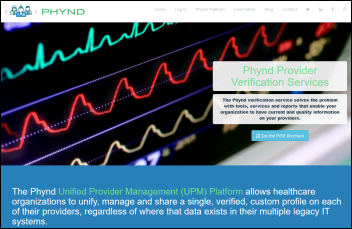
Thanks to the folks at Phynd for upgrading their sponsorship to Platinum. They just released a free ebook titled “The Benefits of a Unified Provider Management Platform.”
If you’re an HIStalk, HIStalk Practice, or HIStalk Connect sponsor exhibiting at MGMA, complete this form and we’ll include your company in our attendee guide. Jenn will be attending, so you can expect regular updates on HIStalk Practice.
Reader MC contributed $100 to my DonorsChoose project, which funded $405 worth of teacher project grants thanks to matching funds from my anonymous vendor CEO and other sources. That money bought 25 sets of headphones for Mr. Weightman’s elementary school class in Indianapolis, IN and 25 calculators for the elementary school math classes of Ms. McCarthy in Brockton, MA. Meanwhile, middle school student Luis from San Diego sent a thank you letter for the two Amazon Fire tablets we provided to his class. He says,
These tablets proved to be very useful in helping me learn and and also improving my grade in classes such as math. Thanks to these tablets, I was able to go from a very low F to a high F and eventually passed the class. This allowed me to attend my promotion ceremony, which makes me extremely grateful for your donation. It also helped me learn and stay up to date with new lessons in class. Thanks to that I am now ready for the next grade.
Webinars
October 7 (Wednesday) 1:00 ET. “Develop Your Analysts and They’ll Pay for Themselves.” Sponsored by Health Catalyst. Presenters: Peter Monaco, senior business intelligence developer, Health Catalyst; Russ Stahli, VP, Health Catalyst. It takes years for analysts to develop the skills they need to build reports and dashboards that turn data into valuable insights. This webinar will describe how to cultivate those analytical skills, including technical prowess and adaptive leadership. Leaders will learn how to develop a culture that fosters improvement, how to encourage analysts to develop the right skills, and ways to remove the barriers that stand in their way.
Contact Lorre for webinar services.
Acquisitions, Funding, Business, and Stock

Israel-based drug manufacturer Teva will acquire Gecko Health Innovations, a Cambridge, MA-based smart inhaler hardware and software vendor. The company had reported $2.1 million in funding, although $2 million of that was in debt financing and none was more recent than two years ago.
Sales

Nebraska Methodist Health System (NE) chooses Lexmark Accounts Payable Automation.
Boston Children’s Hospital (MA) will use VitalHealth Software’s QuestLink for measuring the outcomes of children treated for cleft lip and palate.
WCA Hospital (NY) chooses Imprivata Confirm ID, integrated with Cerner Soarian, for electronic prescribing of controlled substances.
People
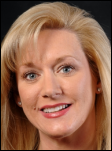
University Hospitals (OH) promotes Charlotte Wray to president of UH Elyria Medical Center. She was previously VP of clinical operations and information systems and chief clinical officer/CIO.

Bayhealth (DE) names Rick Mohnk (UMass Memorial Health Care) as VP/CIO.

Viewics hires Eleanor Herriman, MD, MBA (Bloomberg BNA) as CMIO.
Monadnock Community Hospital (NH) hires Peter Johnson (Dartmouth Hitchcock Medical Center) as interim CIO. He replaces Nancy Barisano, who retired two weeks after a failed upgrade that crippled the hospital for four days.
Announcements and Implementations
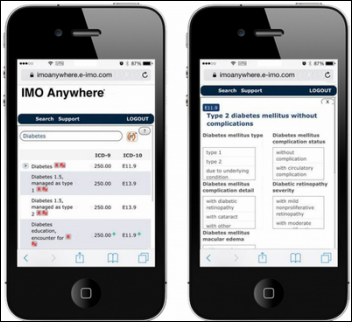
Intelligent Medical Objects offers a free trial of IMO Anywhere, an iOS or Android app that allows clinicians to document from any location with ICD-10 drill-down capability and 460,000 terms.
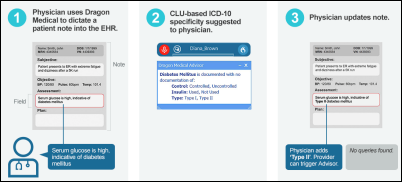
Nuance announces Dragon Medical Advisor, computer-assisted physician documentation for ICD-10.
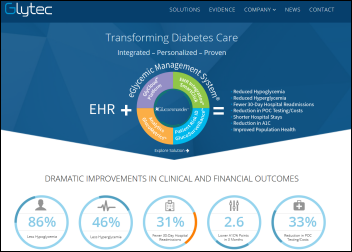
An Emory University study that used Glytec’s Glucommander IV glycemic control system finds that treating type 2 diabetics undergoing CABG surgery with intensive insulin therapy reduces post-surgical complications.
Navicure offers its clients free access to ICD-10 transition tools that include online correction of rejected claims, expanded claim tracking, and ICD-10 to ICD-9 mapping for any payers that turn out to be unprepared for the change.
Government and Politics
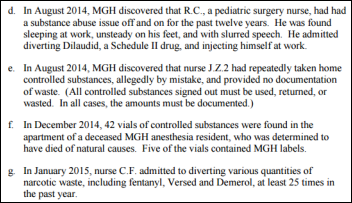
Massachusetts General Hospital (MA) will pay $2.3 million to settle federal drug diversion charges following its 2013 disclosure to the DEA that two of its nurses had stolen 16,000 doses of oral narcotics, mostly oxycodone, by removing them from the hospital’s automated dispensing machines. MGH’s corrective action plan requires it to hire a full-time drug diversion compliance officer, to install biometric security on its automated dispensing machines, and to implement controlled substance surveillance software. Technology-specific issues were that the pharmacy system’s drug count didn’t match the contents of the dispensing machines, drugs could be withdrawn for patients up to three days after their discharge, employees could remove drugs from the dispensing machines for up to two minutes before being locked out, and pharmacy employees did not monitor dispensing machine overrides.

An HHS OIG investigation of Medicare-paid ambulance rides in 2012 finds that $30 million worth of them apparently resulted in no medical treatment, some urban ambulance services billed the government for trips averaging 100 miles vs. the average of 10 miles, and at least 20 percent of ambulance companies billed questionable trips. Medicare paid $5.8 billion for ambulance trips in 2012. The OIG suggests that Medicare require more documentation from ambulance companies and tell its billing contractors to stop paying claims quickly if they don’t meet basic requirements. Weird News Andy suggested the photo above.
Senators John Thune (R-SD) and Lamar Alexander (R-TN) of the Senate’s HELP Committee ask the administration to immediately delay implementation of Meaningful Use Stage 2 to at least January 1, 2017 and then phase in Stage 3 based on provider readiness. They join a 116-member bipartisan group asking for the same delay.
An HHS OIG report recommends that OCR record information on all data breaches – not just large ones – in its database and that it do a better job following up on and documenting corrective action.
Privacy and Security
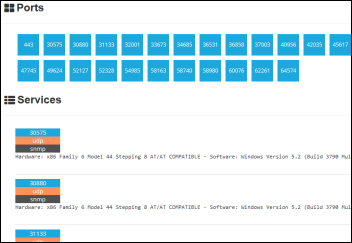
Security researchers find thousands of Internet-exposed medical devices, 68,000 of them owned by an unnamed health system. The researchers also created fake MRI and defibrillator honeypots that attracted 55,000 successful logins, 299 malware insertion payloads, and 24 remote code execution exploits. They note that many of the devices are not configured correctly for security and that medical devices are often running Windows XP without antivirus protection. Above is a sample search I ran on Internet of Things search engine Shodan showing ports and services used by a Kentucky hospital.
A California dermatology practice notifies patients that its document scanner was inadvertently exposing their records on the Internet.
Innovation and Research
A study finds that computer-aided detection of breast cancer that costs hundreds of millions of dollars per year doesn’t perform any better than radiologists examining the images manually. Insurance companies pay an extra $20 per exam for using the technology, while Medicare pays $7. The CEO of one of the two companies that sells the technology says clinical literature supports its value and the FDA has approved its safety and benefits.
Technology
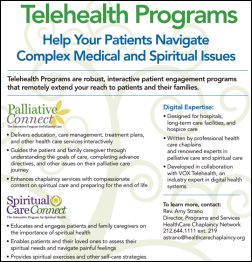
The Wall Street Journal notes the growth of telemedicine-like programs offered by healthcare chaplains, with the HealthCare Chaplaincy Network offering free online chats with individuals or paid services to hospitals who want to expand their offerings for the growing number of patients who have limited inpatient stays.
Other
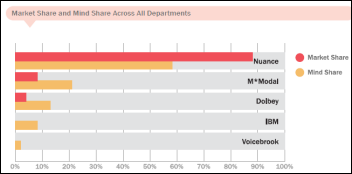
A Peer60 report finds that speech recognition in radiology, cardiology, pathology, and in EHRs is being used by 20 percent of survey respondents, while another 27 percent plan to use it in the next 1-2 years and 30 percent more are considering it. Nuance has 90 percent of the market share but only 60 percent of the mind share across all departments, which the report suggests means they have done a good job but are vulnerable to losing market share to MModal and Dolbey. Cardiology has only an 8 percent adoption rate (mostly because of integration issues) and its users are least likely to recommend their current vendor, making it a high priority market for speech recognition vendors.
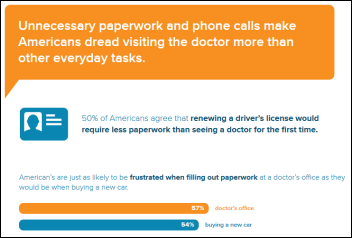
More than half of respondents to a Surescripts survey say their doctor doesn’t have their complete, accurate medical history during their visit. Around two-thirds say they’re OK with doctor using computers or tablets during their visit and half wish their doctor would communicate by email. Around half also say they would demonstrate more loyalty to a practice that lets them fill out forms online ahead of time, review lab tests online, store their medical records electronically, and schedule appointments online. The average doctor’s visit lasts 15 minutes, of which 11 minutes is wasted in filling out paperwork and reciting the medical history.
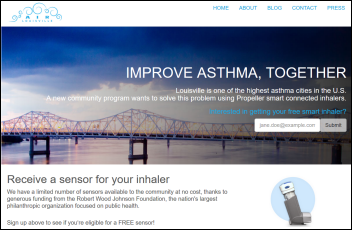
PBS covers Air Louisville, a project in which asthmatics use “smart” inhalers with Propeller Health’s sensor attached to contribute to a database that matches the severity of their symptoms to their GPS-reported locations at the time, helping the city understand how poor air quality affects the 13 percent of its residents with asthma.

OHSU informatics professor Bill Hersh, MD worries about the future of clinical informatics board certification, offering these points:
- Clinical informatics is a subspecialty, so those who earn board certification must also maintain their primary medical specialty certification even though they may spend all of their time working in an informatics role. Those informaticians who don’t have board certification are not eligible for the clinical informatics board certification at all.
- Once the grandfathering period ends in 2018, the only way to earn informatics certification will be by taking a two-year fellowship, which isn’t practical for physicians who enter the field mid-career.
- Based on these rules, a real-life student who will complete an MD/PhD in 2016 and then will finish residency sometime after 2018 will not be eligible to take the clinical informatics board exam despite holding a PhD in biomedical informatics.
The San Diego paper describes the city’s attempts to redirect frequent 911 callers from EDs to detox facilities, profiling its most frequent flyer, a homeless, wheelchair-bound alcoholic who has called 911 for a ride to the ED 242 times in three years, consuming $573,000 worth of medical care. The city provides paramedics with iPads that track 911 calls in real time, providing medical and social histories for frequent users. It is also creating a grant-funded Community Information Exchange that involves paramedics, case workers, a homeless support group, and the police department, but no hospitals have signed up. Hospitals are, however, supporting housing and coordinated care for the frequent 911 callers in an effort to reduce readmissions.
Sponsor Updates
- AirStrip CEO Alan Portela discusses the future of digital health on CNBC’s Squawk Alley.
- Craneware will host its Financial Performance Summit in Las Vegas October 20-22, which will emphasize the value cycle.
- Aprima Medical Software will exhibit at the Texas Pediatric Society annual meeting October 1-2 in Sugarland.
- Billian’s HealthData interviews David Sindelar, CEO, St. Anthony’s Medical Center.
- Caradigm will exhibit at the iHT2 Health IT Summit October 6-7 in Chicago.
- CompuGroup Medical will exhibit at the Symposium for Clinical Laboratories October 7-10 in Las Vegas.
- Cumberland Consulting Group will exhibit at the MDRP Annual Summit September 30-October 2 in Chicago.
- Divurgent will exhibit at the AEHiX 15 Fall Forum October 7 in Orlando.
- EClinicalWorks will exhibit at the 2015 KHIE EHealth Summit September 30 in Bowling Green, KY.
- HCS will exhibit at the AHCA/NCAL Annual Convention & Expo October 4-7 in San Antonio.
- Healthwise will exhibit at the HIMSS Public Policy Summit October 7-8 in Washington, D.C.
- Holon Solutions will exhibit at the NRHA Critical Access Conference September 30-October 2 in Kansas City, MO.
Blog Posts
HIStalk sponsors exhibiting at the AAFP FMX Annual Meeting September 29-October 3 in Denver:
- Aprima Medical Software
- CareSync
- CoverMyMeds
- E-ClinicalWorks
- Elsevier
- E-MDs
- Greenway Health
- Ingenious Med
- NextGen
- Quest Diagnostics
- Surescripts
- Wolters Kluwer
Contacts
Mr. H, Lorre, Jennifer, Dr. Jayne, Dr. Gregg, Lt. Dan.
More news: HIStalk Practice, HIStalk Connect.
Get HIStalk updates.
Contact us or send news tips online.












































































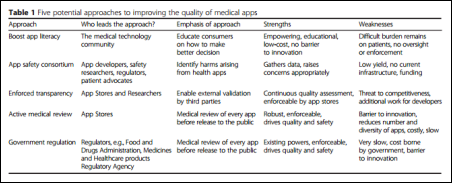



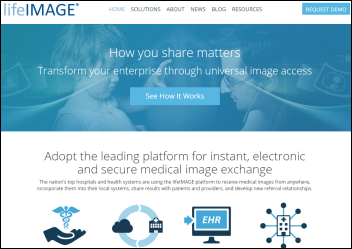
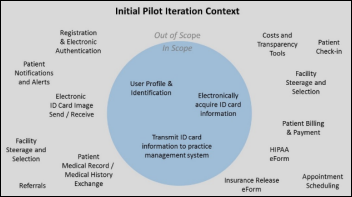

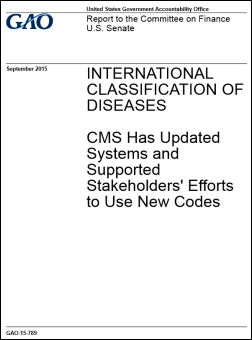

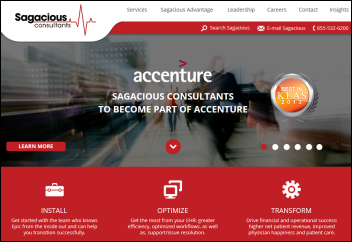
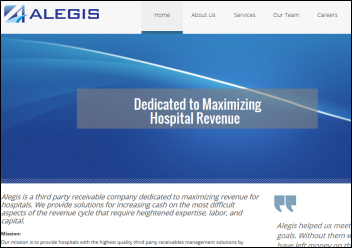


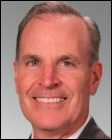


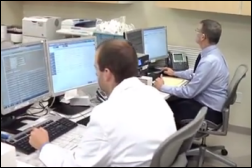

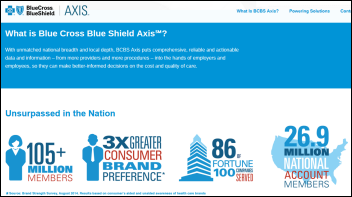

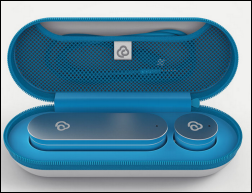
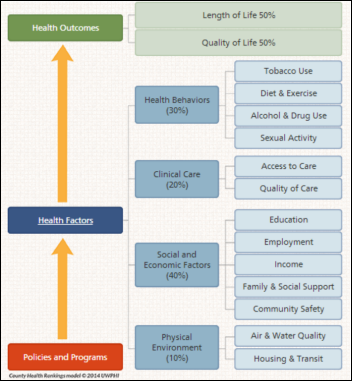
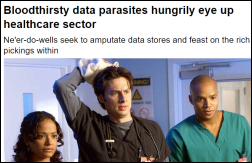


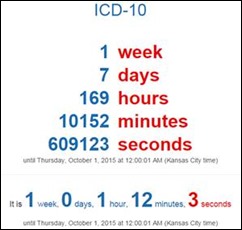

I hear you, and I agree—HIMSS is definitely facing some big challenges right now. The leadership and governance issues you…